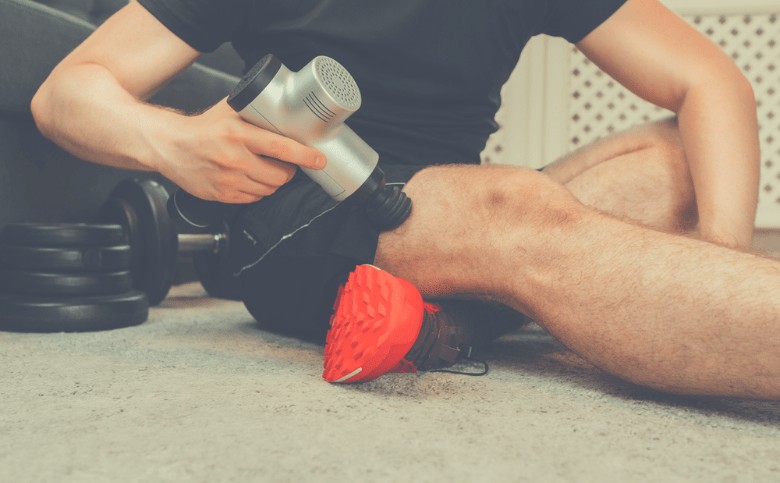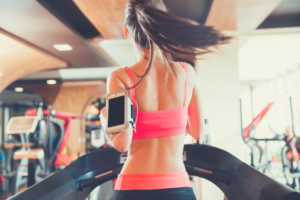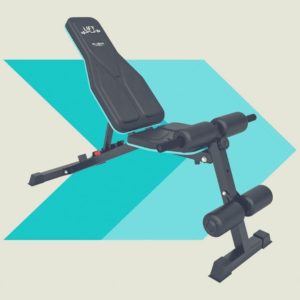A massage gun is an electronic device that uses percussive therapy to simulate a massage.
The instrument typically comes with various attachments that offer a different level of firmness and have multiple settings that allow you to tailor the therapy to your needs.
Unlike vibrating massagers or kneading massage chairs, massage guns use a drumming technique.
Will massage guns do more harm than good? When used correctly, massage guns aren’t bad for you.

Percussive Therapy and Massage Gun Benefits
In fact, there are numerous health benefits to using massage guns. We’ll dive into the benefits in just a moment, but first, it’s important to note – there are cases where their device may not be a good option.
If you’re pregnant, for example, percussive therapy likely isn’t a good idea. The same goes for people who suffer from medical issues like deep vein thrombosis.
One of the key benefits of percussive therapy is its ability to speed up muscle recovery, mimicking the benefits of massage therapy without the hassle of having to drive to a masseuse.
It’s also been shown to decrease delayed-onset muscle soreness (DOMS), which is the scientific term for the dreaded second-day blues you feel after a tough go in the gym.
Similarly, you can use the tool before a workout to help increase circulation, reducing the volume of microtears, and increasing your range of motion. Some even feel that it reduces their perception of muscle fatigue.
However, please don’t take this to mean that it’s safe to overtrain. It’s essential to notice the signs of overtraining and how to avoid injury.
The benefits of this popular fitness tool extend beyond your workouts.
Whether your body is fighting back against aching joints and muscles due to aging, or if you’re chained to a desk all day for work, massage guns can help.
The drumming movement can help flush extracellular fluids out of your muscles, relax muscles and break up scar tissue.
It’s also a convenient option to relieve stress and anxiety, which can also improve your sleep.
A common misconception is that massage guns will beat a person’s fat into submission. Unfortunately, it is not a weight-loss tool, but it can help minimize cellulite’s appearance.
You actually have a specific number of fat cells that, by the time you reach adulthood, tend to say in the same area.
This is why you often hear people complain of fat restricted to a particular part of their bodies like the thighs.
When you gain weight, you don’t add new fat cells; the existing fat cells simply expand. On the other hand, when you lose weight, the fat cells shrink.
Cellulite is the result of the existing fat cells pushing up against your skin. This pulls down the cords that connect your skin to your muscles.
As the massage gun flushes out fluids and increases circulation, it forces the fat cells to redistribute and reduces the appearance of cellulite.
Why do some people seem prone to cellulite? There are quite a few factors that contribute to the prevalence of cellulite.
How Often Should You Use a Massage Gun?
To reap the benefits of this tool and prevent injury, it’s essential that the device is used correctly.
The reality is that massage guns are straightforward to operate, but their simplicity can deceive you into thinking that the more you use them, the better.
However, the machine isn’t mean to be used all day, every day. So the question becomes how often and for how long you should use the device.
If you focus on one area for too long, you can expose yourself to bruising. A telltale sign that you’re overdoing it is if your skin begins to redden.
That means that you have a lot of blood flowing to the area, and it’s time to move spots. If the site starts to feel tender or sore, that’s another sign that you’ve stayed in one area too long.
It’s best to start with a light touch, slowly moving within a small area of the body. The gun should do most of the work for you, so there’s no need to use force or muscle, this can actually do more harm than good.
Keeping the gun moving will help make sure that you’re only in one spot for a few seconds at a time.
After a few minutes of moving through one area, you can move on to another small area.
Most devices have several settings available, so take the time to try out the different settings to see what feels best.
Some massage guns also have an automatic shut-off timer to ensure that you’re not overusing the tool.
To get long-lasting results, you do need to use the device consistently. How often should you use a massage gun?
You can safely use the tool three times a day, so long as you aren’t hitting one area for too long.
For example, you could use the gun for 5-10 minutes in the morning, afternoon, and evening.
However, if you’re doing a more extended, whole body 30-minute session, you should limit it to once a day.
There is one small caveat; if you have a painful knot, you want to treat it similar to the way you train in the gym or on the pavement and give your body a rest day.

When is the Best Time to Use a Massage Gun?
There are so many uses for massage guns, so when is the best time to use them? Well, that depends on your goals.
If you’re looking to relieve muscle soreness and improve your fitness performance, the ideal time to use the gun is during your warm-up and cool down.
During your warm-up, briefly hit the muscles you’re working that day to improve blood flow to those areas.
After your workout, spend about two minutes on the muscles you worked and a quick 30 seconds on the surrounding muscles.
If your goal is to relieve stress and anxiety, you can use the tool to release tension in the muscles, which are typically the shoulders and back muscles, for two to three minutes per small area.
It’s suggested to do this two times a day, morning and evening. However, if you find you’re stressed at work, it’s absolutely safe to add in a session in the afternoon.
The same goes for those whose goal is to increase blood circulation.
Doctors have long suggested massage therapy for those with postural orthostatic tachycardia syndrome due to its ability to increase blood flow.
Those in similar situations can use the gun to improve circulation up to three times a day in the morning, afternoon, and evening.
Where Should You Not Use a Massage Gun?
We’ve talked about how massage guns are safe if used correctly, and part of that is knowing where you shouldn’t use the tool.
Some of these may seem pretty obvious, like not using the tool on areas where you have scabs, fractures, or open wounds, but others are not so obvious.
You should avoid using massage guns on areas where you have badly pulled muscles or torn ligaments.
This is true for any type of massage, whether by a masseuse, a vibrating massager, or a seated, kneading massager.
It’s also vital to avoid bony areas like your knee and elbows. Your body’s response to the massager is critical to prevent injury during use.
So, if you have impaired feeling in a particular area of your body, as with some people who have diabetes, you shouldn’t use the gun in that location.
Last, and most importantly, you should avoid using the gadget over nerves or major blood vessels. This is especially true of your neck.
In fact, in a Washington Post article, Dr. Alan Novick discussed the importance of not using massage guns on your neck, as they can lead to a tear in the carotid artery, something called a carotid dissection.
That said, it’s perfectly safe to use the gun on your shoulders and your traps, which are the pair of muscles in your upper back.
Stress usually causes tension in these areas, and that tension can lead to significant headaches.
Aside from your neck, as a rule of thumb, you should immediately move the gun away from that area if you feel a tingling sensation.
Are Massage Guns Worth the Money and What Should I Look For?
The great thing about massage guns is that you’re able to reap the benefits of massage therapy without leaving your home.
You can easily spend two to three times more going to a masseuse once a month than investing in an excellent massage gun that you can use daily.
What kind of features should you be looking for? When it comes to a device like a massage gun, you can find models that run from $80 to $800.
This is one case where having a brand name matters. First, brand-name guns have had millions of research and development poured into their products, as well as vigorous safety tests.
Additionally, they usually have warranties on their products.
It’s also worth considering the noise level, especially if you’re going to be using the device on your shoulders and traps since those muscles are closer to your ears.
Even if you’re not going to be using it in those areas, a loud, obnoxious noise isn’t going to be incredibly conducive to relaxing and destressing.
I also like devices with a rotating arm that allow me to hit areas of the body that are harder to reach.
The most critical piece to selecting a great device is you. For example, if you’re older and suffer from arthritis, you may want to choose a gun with an ergonomic handle that is on the lighter side.
If you’re always on the road, you should consider the battery life. I recommend one feature to anyone in the market for a massage gun – choose one that has attachments that are easy to clean.
The Cardinal Rule
There’s one cardinal rule for safely using massage guns, and that is to listen to your body. The old saying, “No pain. No gain,” is a complete fallacy.
No fitness device, gadget, or tool should ever cause you pain, so if it hurts, stop immediately and take a look at your settings, the area of the body your treating, and use a lighter touch the next time around.
If you use massage guns correctly, they’re not only safe but can also speed up recovery time, lessen delayed soreness, increase your performance in the gym, help you destress and even help with issues like sciatica and fibromyalgia.
However, if you’re in doubt due to an underlying medical matter, you should always seek the advice of a doctor.
Ready to find the gun for you? Check out our review on the Theragun PRO Deep Tissue model!



